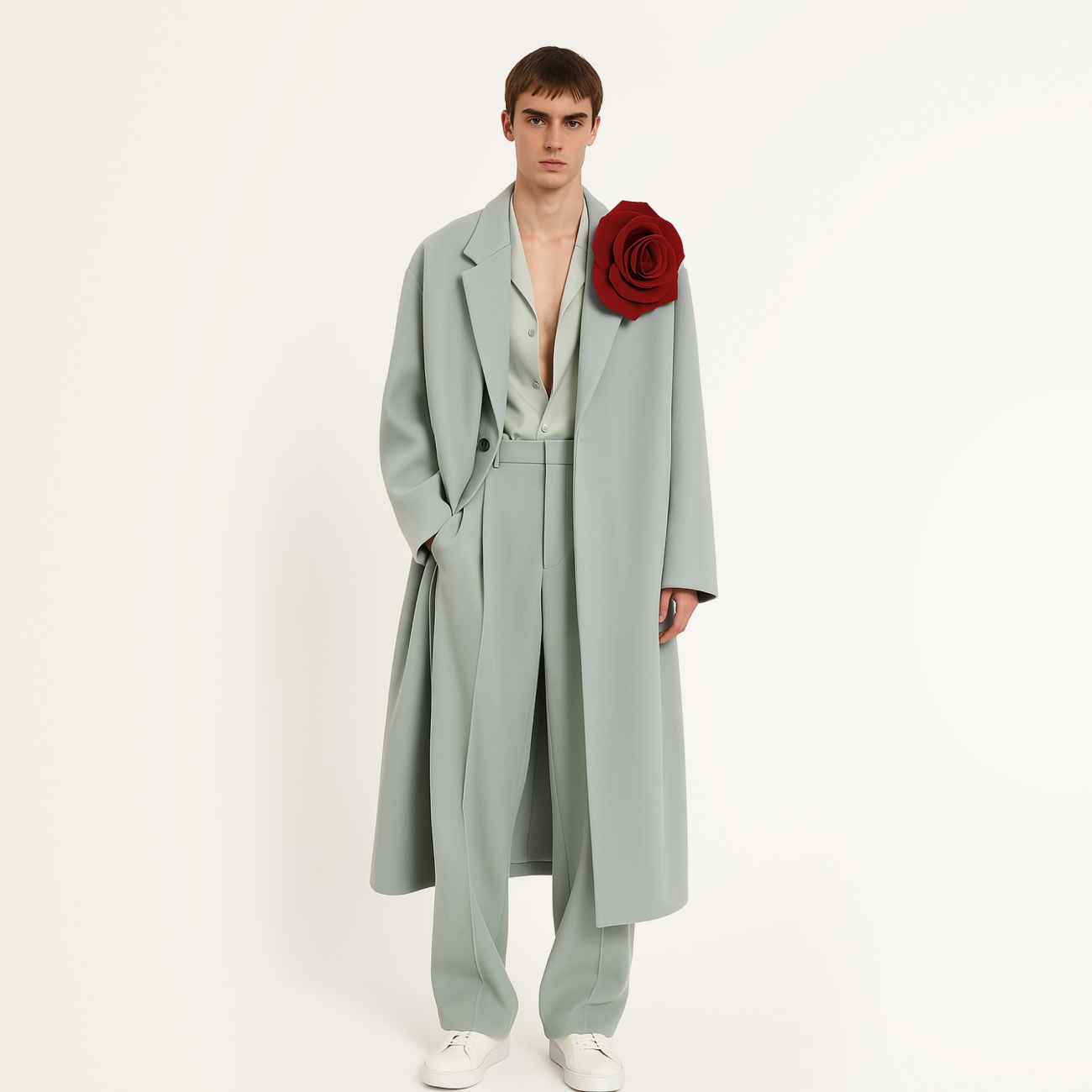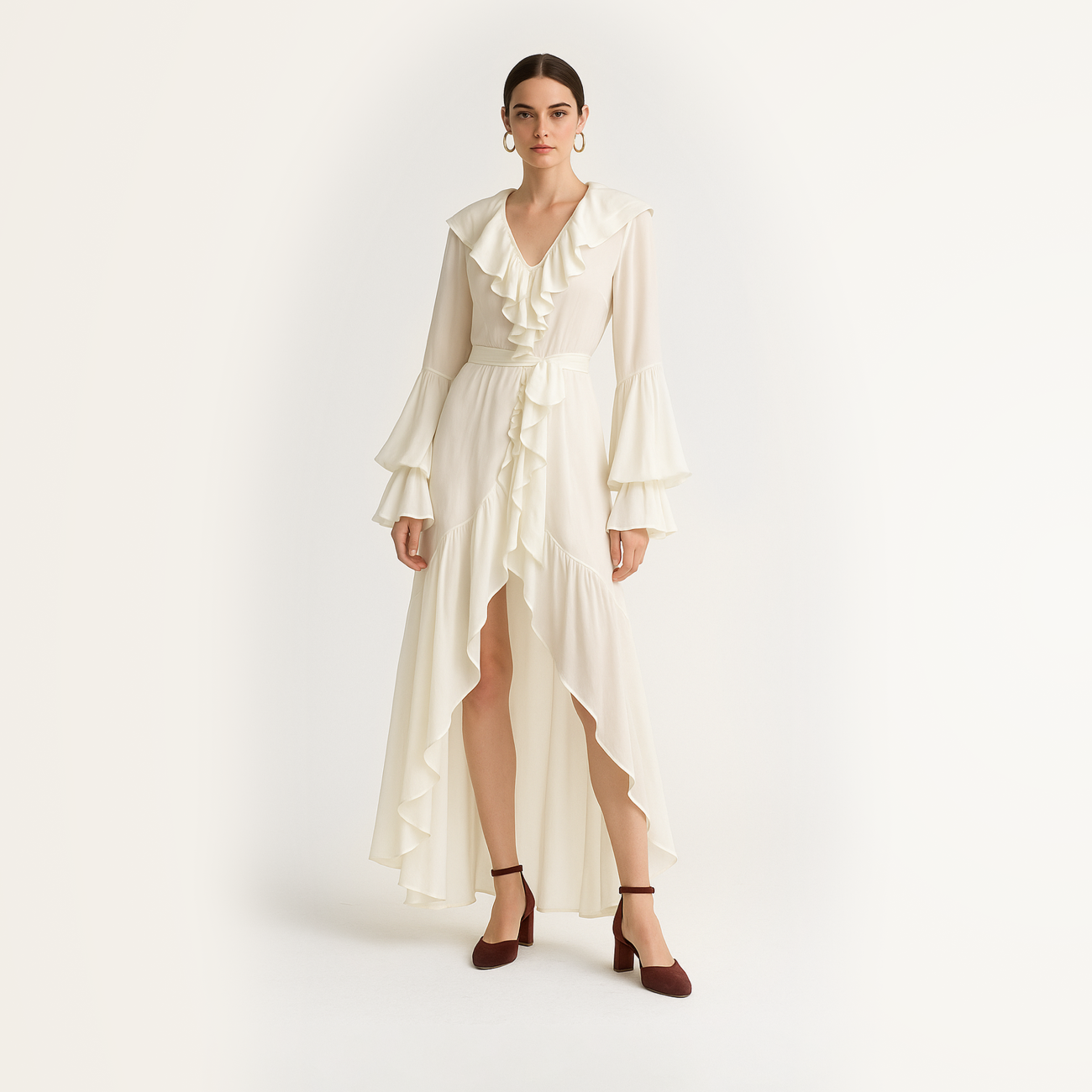Romantic
Romantic style is an expression of tenderness, sensuality, and dreaminess. It creates an aura of lightness, charm, and elegant sophistication around a person. At its core lies a philosophy of idealization, elevation of the image, and an aspiration toward something ethereal and beautiful. Romantic style is not just about choosing specific pieces — it is a way to convey emotions, dreams, and a pursuit of beauty through the aesthetics of clothing. While often associated with femininity, this style can also serve as an expressive element in men’s fashion.
History
The history of the romantic style traces back to the Romanticism era of the late 18th and early 19th centuries, when society began embracing ideals of sensitivity, elevated love, and idealism. This period, which began in Europe—especially in England and France—saw Romanticism influencing literature, art, and fashion, proclaiming the beauty of human emotion, the inner world, and a connection to nature as more important than rationalism and the strict canons of classicism.
Fashion of the time became much lighter and more elegant compared to previous eras. Looser, more “airy” dresses that highlighted natural forms gained popularity, along with light and pastel tones that symbolized softness and grace. Men also expressed their romantic side through fashion: velvet suits, silk scarves, and poet-inspired looks were part of the movement.
In the 19th century, especially during the Regency period in England and the Biedermeier era in Europe, women’s fashion became increasingly refined. Dresses featured a lowered, accentuated waist, often tied with a sash or ribbon, puffed sleeves, ruffles, and exquisite fabrics like lace, chiffon, and satin. It was during this time that fashion truly embraced lightness and grace, moving away from excess ornamentation in favor of elegant lines and detail.
In the latter half of the 19th century, under the influence of the Victorian era, fashion became more elaborate and dramatic. Silhouettes evolved: corsets returned to accentuate the waist and create hourglass shapes, while full skirts and voluminous sleeves elevated women’s clothing into idealized, overtly sophisticated expressions. Garments in this style became even more detailed and refined, often adorned with embroidery and lace to add depth to the look.
In the 20th century, particularly in the 1930s, the romantic style took on new features. Designers, inspired by Hollywood cinema, began creating feminine silhouettes that became symbols of beauty and elegance. Iconic actresses of the time, such as Greta Garbo and Vivien Leigh, embodied romantic looks on screen, and their real-life wardrobes became aspirational for women. Dresses with soft drapes, flowing lines, and delicate fabrics returned to prominence, bringing charm and grace into everyday life.
In the 1970s, amid the hippie movement, the romantic style merged with boho ideals and self-expression. Embroidered and printed dresses and skirts, along with handmade jewelry, gave the romantic aesthetic a relaxed and individualistic tone.
Modern fashion continues to integrate elements of the romantic style, from airy fabrics and ruffles to a focus on natural lines. Today, the romantic style has become multifaceted, thanks to its ability to merge history with the present.
Signature elements of the style
Color palette
The romantic style favors pastel and muted tones—pink, peach, soft blue, white, and cream. However, it can also include bright accents and deep, rich colors such as burgundy or navy blue, adding a touch of drama to the look.
Prints
Floral patterns, lace, polka dots, soft waves, and nature-inspired motifs. Prints often convey a sense of lightness, delicacy, and refinement.
Textures
The romantic style embraces soft, airy, and semi-transparent fabrics such as chiffon, silk, lace, satin, and tulle. These materials emphasize the lightness of the look and create an “ethereal” silhouette.
Cuts & silhouette
Flowing lines, fitted silhouettes, puffed sleeves, ruffles, flounces, and gathers. The romantic style often highlights the waist or shoulder line, with elegant draping that enhances femininity.
Wardrobe essentials
- Dresses with floral prints
- Blouses with ruffles and flounces
- Lace tops
- Midi or maxi skirts with draping
- Coats with stand-up collars or decorative elements
Substyles
- Victorian Romanticism — a return to historical features of the Victorian era: high collars, cinched waists, long skirts, and lace adding drama.
- Grunge Romance — a mix of romantic elements like lace and chiffon with rough textures and details, such as leather or chunky accessories.
Email: support@belt-app.com


















